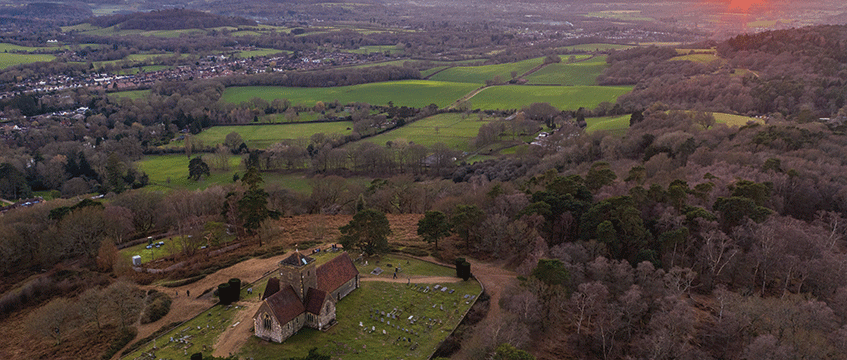Green belt – friend or foe?
Secretaries of state may come and go, but some things remain the same in the English planning system – such as the controversy around protections for, and redevelopment of, the green belt. But what is the green belt, and does designation as such really make that much difference to development prospects?
What is the green belt? Although the phrase “green belt” is an evocative one, conjuring up images of rolling hills and exquisite countryside, it is actually simply a planning policy designation. Importantly, the key driver of that policy is not, in fact, really about keeping land green. Instead, its fundamental aim is to prevent urban sprawl, by keeping land permanently open.
Consequently, where land is designated as green belt, this is done to prevent the coalescence of conurbations, which then also helps to serve purposes such as protecting the countryside from encroachment and focusing development in existing urban areas.
Secretaries of state may come and go, but some things remain the same in the English planning system – such as the controversy around protections for, and redevelopment of, the green belt. But what is the green belt, and does designation as such really make that much difference to development prospects?
What is the green belt?
Although the phrase “green belt” is an evocative one, conjuring up images of rolling hills and exquisite countryside, it is actually simply a planning policy designation. Importantly, the key driver of that policy is not, in fact, really about keeping land green. Instead, its fundamental aim is to prevent urban sprawl, by keeping land permanently open.
Consequently, where land is designated as green belt, this is done to prevent the coalescence of conurbations, which then also helps to serve purposes such as protecting the countryside from encroachment and focusing development in existing urban areas.
Why is it such a controversial topic?
It is undeniable that the green belt gets more than its fair share of political attention.
This is often attributed to its misleading moniker. Commentators frequently assert that the green belt is treated as sacrosanct because there is so little understanding of how it does and should operate, and that the average person genuinely believes it is a green belt of verdant pastures around our ever-growing cities.
This can cause ill-tempered discussion when the two parties are not even debating the same point. Those in favour of green belt review or reform are rarely arguing that we should pave over areas of outstanding natural beauty or other high-quality countryside and agricultural land, but instead highlight that many areas of green belt are more degraded – more “brownfield” – than areas not enjoying that protection. This disconnect in understanding can make genuine debate about the role of the green belt challenging.
But it would be lazy to put all green belt debate into this category, and much of the discussion serves as a prime example of the delicate balance that our planning system must constantly find between competing social needs.
On one hand there is the need for growth, and in particular new housing. To many it seems bizarre that we would take steps to restrain development, often in those places where there is greatest demand – for example, around the M25. On the other hand though, it is in these areas that the green belt is arguably most important – preventing villages, towns and cities from merging into one mass of development.
In what circumstances might you secure planning permission for development in the greenbelt?
The starting point is that development in the green belt is inappropriate, unless it falls within a number of specified categories. These include things such as buildings for agriculture and provision of outdoor recreation facilities, which don’t harm the openness of the green belt, but also some more substantial development such as infilling of villages, provision of replacement buildings, and the redevelopment of previously developed land.
The courts have said that the list of exceptions is closed, and there has been much debate over the years about the parameters of each of the categories.
If development is inappropriate, the National Planning Policy Framework says that it is, by definition, harmful to the green belt and therefore should not be permitted except in very special circumstances. This in turn has led to extensive discussion about what, exactly, are very special circumstances. There is no statutory definition, and it is a matter of planning judgment for the relevant decision-maker, based on the specific facts of each case.
There is, though, some clarity on what are not “very special circumstances”. For instance, case law confirms that housing need is not, of itself, adequate.
In order to establish very special circumstances, the benefits that the development would deliver need to be weighed against the harm to the green belt, being both harm caused by definition of being inappropriate and other specific harm which may be caused. This is often a significant hurdle.
Is the extent of the green belt fixed?
Like all policy designations, the extent of the green belt can be reviewed. However, the NPPF states that the general extent of the green belt across the country is already established, and continues that green belt boundaries should only be altered in “exceptional circumstances”. This is a high bar, and requires the relevant local planning authority to demonstrate that it has examined all other reasonable options for meeting its identified need for development.
What’s the long-term prognosis for the green belt?
The role of the green belt remains firmly in the public eye, and has been brought into greater focus by the prospect of fundamental planning reform within the Levelling-up and Regeneration Bill. This has brought out proponents for both tightening and relaxing the rules, each arguing that the current proposals don’t go far enough one way or the other. Ultimately though, given that there was a commitment in the Conservative manifesto – to which Rishi Sunak has only recently repinned his colours – to “protect and enhance” the green belt, it seems unlikely that its importance will be diminished in the short term. Indeed, it has been suggested that the promised National Development Management Policies may be used to strengthen the protection of the green belt.
And, indeed, if we are in the position that both those who see the green belt as sacrosanct and those who see it an inappropriate restriction on development are unhappy, perhaps we have struck the right balance after all?
Hannah Quarterman is a partner in the planning practice at Hogan Lovells
Imange © Oliver Dixon/Shutterstock











